Church broadcasting in New Zealand has a history dating back to the arrival of television in the 1960s.
If you’ve lived in New Zealand for some length of time, you may remember Praise Be. Recorded in locations around New Zealand, Praise Be was a mix of choral music and bible readings. TVNZ’s Religious Programmes Unit with advisory support from the Churches’ Broadcasting Commission produced a variety of television shows responsible for bringing religion to the masses. Of all of them, Praise Be is probably the best remembered and most successful; the show was on the air from 1986 to 2016. It has since become an important visual archive of congregations and choirs in New Zealand.
Television arrived in New Zealand in 1960. Initially, television was only in black and white format, and it wasn’t until 1973 that colour television became available. In the beginning, The New Zealand Broadcasting Corporation (NZBC) was responsible for running television and determining what programmes were scheduled. In the 1960s the local content mainly consisted of news broadcasts and current affairs progammes.
Religious programming on the radio already existed, but with the advent of television in New Zealand and its growing popularity, the Church saw an opportunity to harness the power and reach of television. By 1965, about half of New Zealand households had a television. Despite some clergy viewing television with suspicion, it was widely thought that televised church services could be a good thing. Television would allow parishioners who were unable to attend church due to ill health, disability, or distance to access church services from their homes. The Church also wanted to reach out with Christian messaging to people who watched television but might not have considered attending a church service in person.
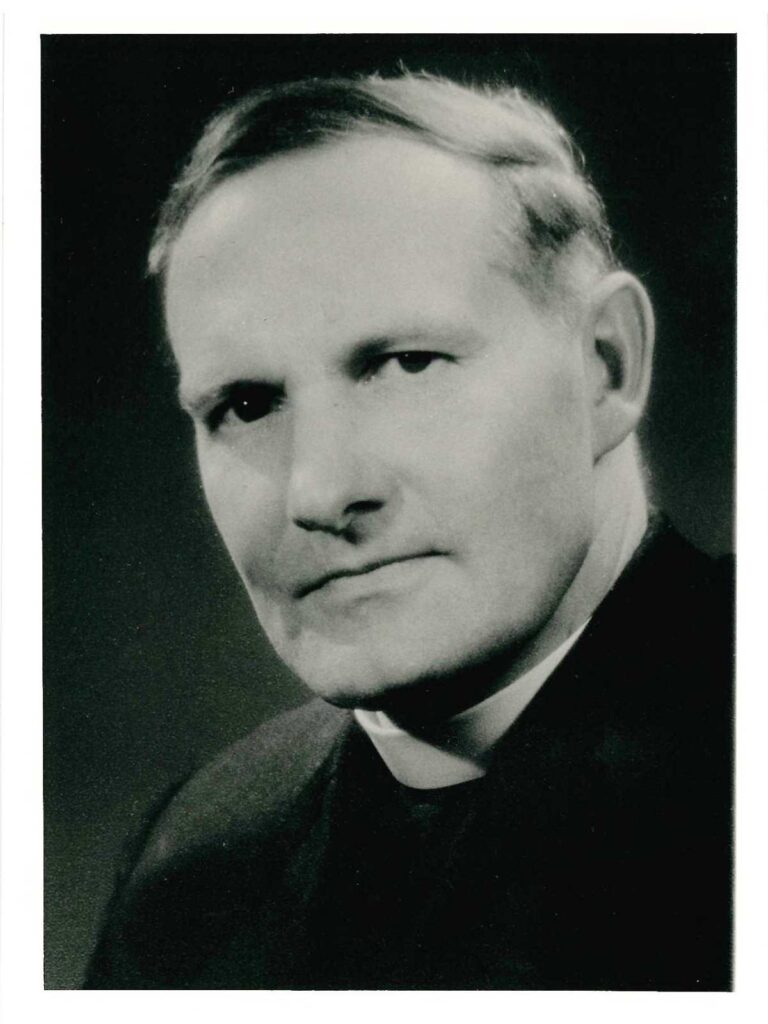
In 1959 the Standing Committee of the General Synod appointed Canon A C F Charles as full-time Director of Religious Broadcasting and Television. He was succeeded by Revd. Charles F Harrison (above) in 1964. It was the role of the Director to liaise with the NZBC and other Churches, establish standards for religious broadcasting and to organize training.
Although radio training workshops for clergy were already run with support from the NZBC, the new medium of television was quite different to radio. The first television training school for clergy was held in November 1966 but with a lack of access to a proper studio, training was somewhat limited.
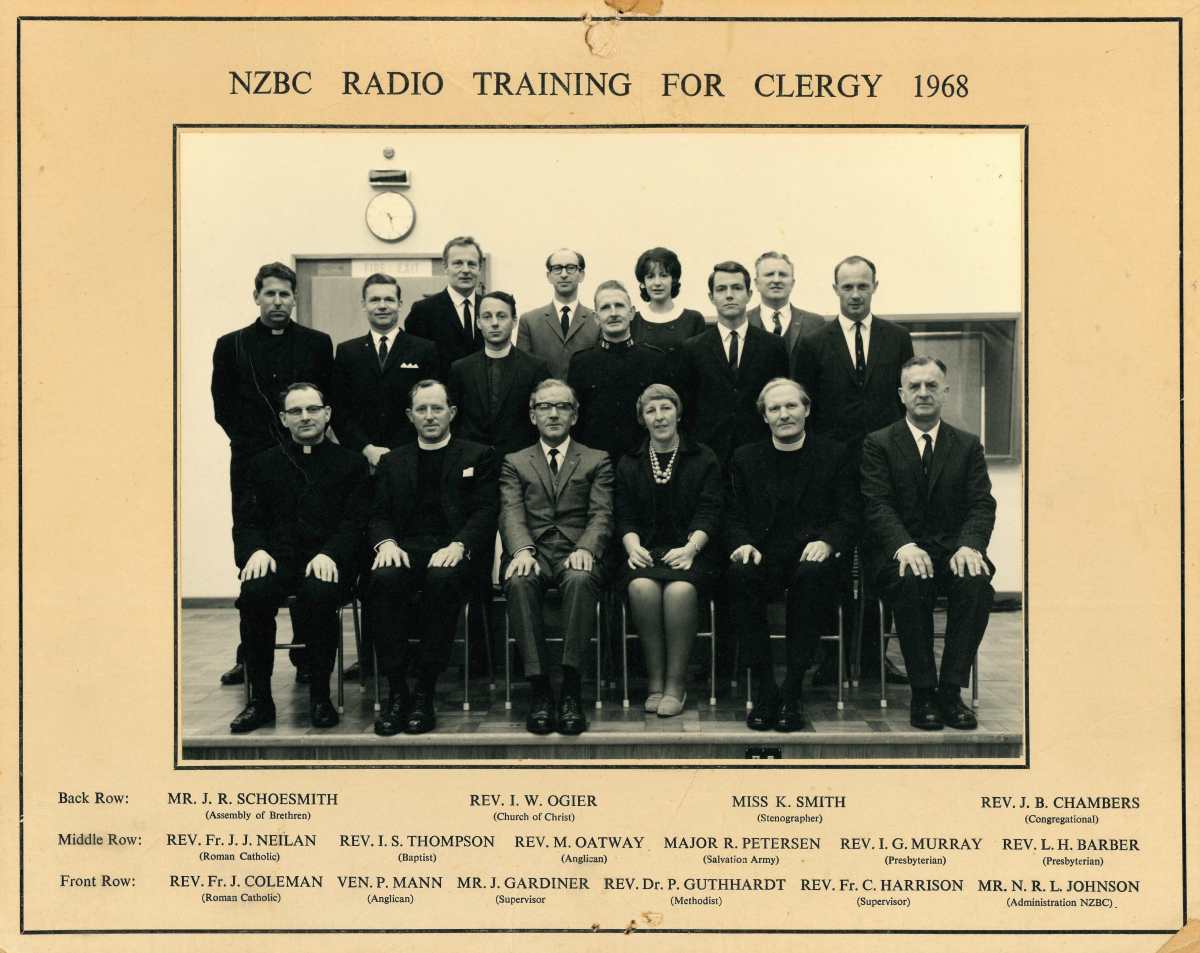
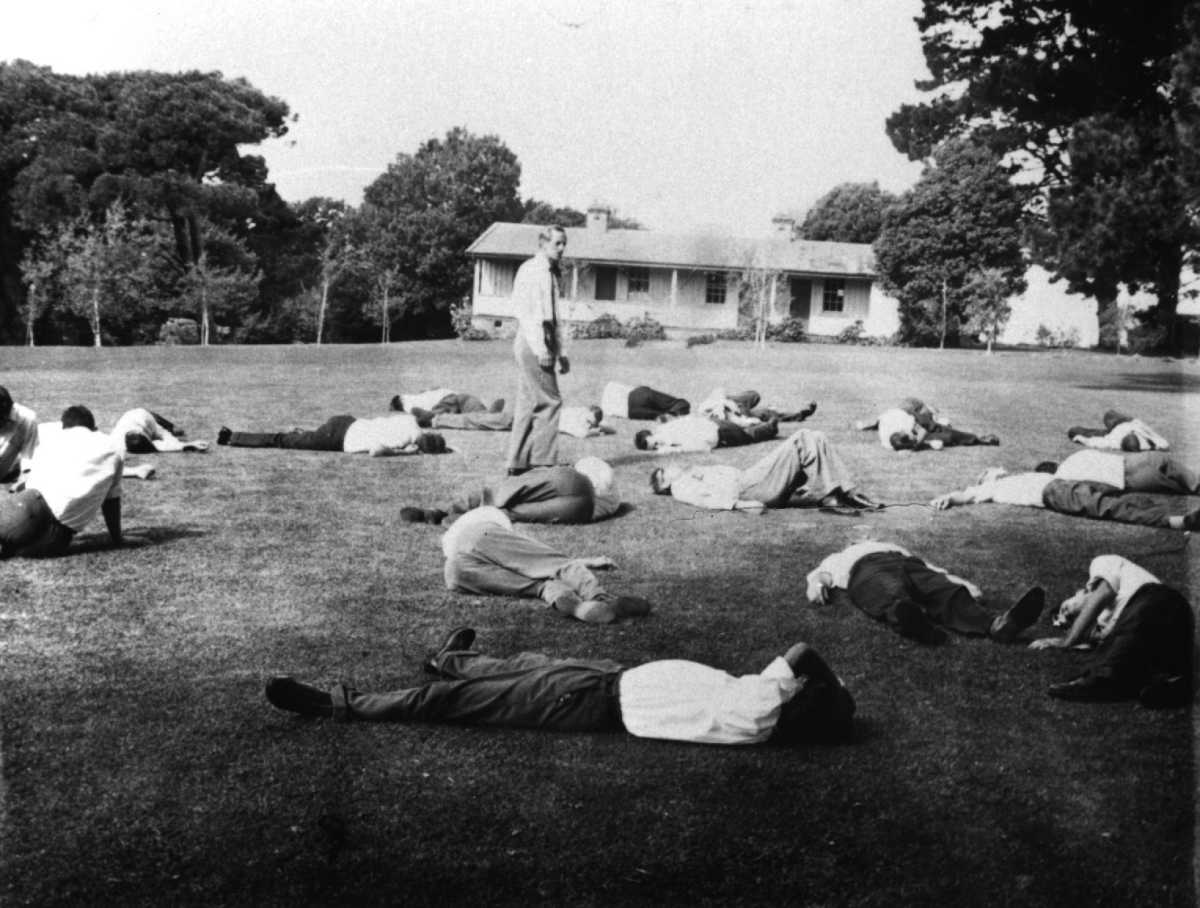
In training for television, clergy had to understand how to use microphones and camera angles effectively, plus plan their televised services to fit within a restricted time slot. The Broadcasting Committee gave advice on the length of sermons, hymns and prayers, and the selection of topics that would appeal to a wide audience. Ministers also had to consider their voices, the tone and speed of their speech and no mumbling was allowed! This booklet on religious broadcasting supplied by the Australian Broadcasting Corporation contained helpful advice.
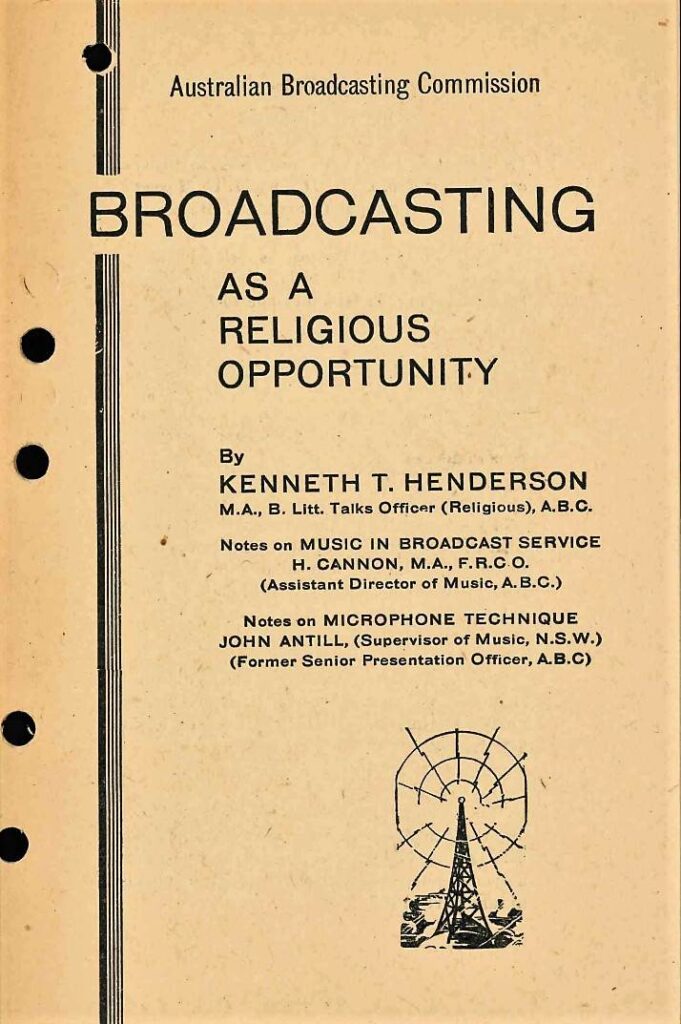
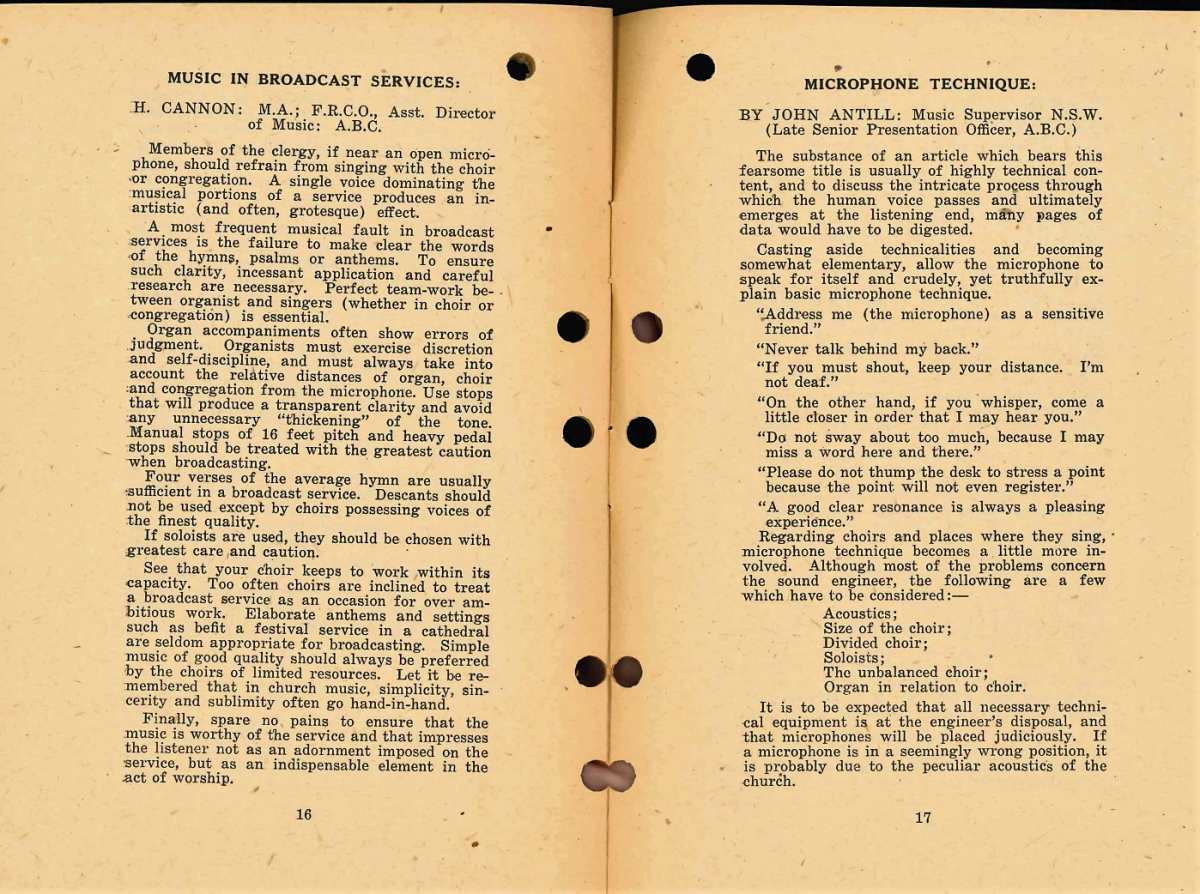
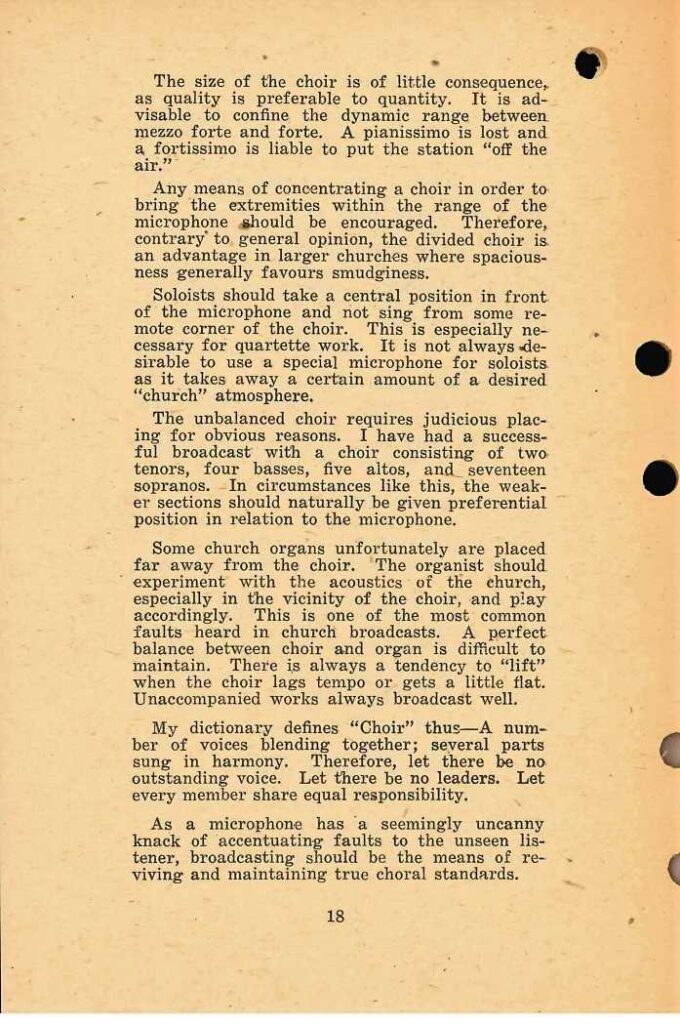
All three images above: Broadcasting as a religious opportunity by Australian Broadcasting Corporation, Archives reference: ANG 82-1
The outbreak of Covid-19 in 2020 saw churches again adopting new technology to reach their communities. Lockdowns posed the question of how to stay connected and worship together, especially when people couldn’t gather together in church buildings.
Many churches embraced online video platforms such as Zoom, Microsoft Teams, Skype and YouTube to record and broadcast virtual church services to their congregations. Covid-19 has forever changed many aspects of our lives, but not all change is negative. For churches that have learned to use this technology in a new way, it now allows them to better serve their church communities in the future.
Church broadcasting in New Zealand, in both radio and video, has come a long way since its beginnings. From Praise Be to YouTube during Covid, churches and church organisations have adapted to the times, which has brought both challenges and opportunities. What’s next for church broadcasting in New Zealand?


what is the purpose and correlation of relaxation exercises to speech reading?